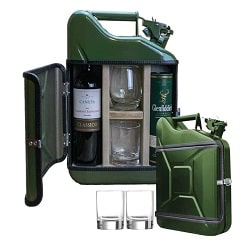
In today’s era of accelerated digital transformation, travel brands need to approach the consumer journey with a more nimble mindset. Companies that can bring people-inspired digital business solutions to the table stand a good chance of thriving post-recovery.
The global pandemic has impacted travel in lasting ways, accelerating demand for tools that can help restore consumer confidence in travel, instil peace of mind, and build loyalty. For digital travel marketers, meeting these new needs and expectations requires enhancing the traditional consumer journey with contactless innovations and personalized touchpoints.
According to a new survey on consumer readiness for future technologies from Appnovation, a global digital agency that combines digital experience and design, technology and strategy, around half of the consumers between ages 25 and 54 consider digital experiences to be very important, and health and safety is a top consideration. SkiftX spoke with Anton Morrison, VP of user experience and design at Appnovation, about how destination and hospitality companies can leverage this data to come up with customer-focused digital business solutions.
The research we did is showing upfront that consumers are changing fast, so we’re trying to help some of our clients think through their problems from a design-thinking methodology and mindset,” Morrison said. “Rather than thinking about big digital transformations, we’re putting problems through a more human-centric lens and looking for ways to incrementally improve experiences at a faster pace ”
1. PRIORITIZE HEALTH AND SAFETY
Research shows that people are willing to travel as long as they feel safe about it. While social distancing guidelines and alert messages are recognized as critical measures that all brands and companies should follow, consumers expect technology-based services to be leveraged to provide additional safety and precautionary measures.
“From a user experience design perspective, we must ask ourselves: How can we help people feel safe about travelling? What do they need to know about the places they’re travelling to? How can we help deliver the information they need so they can travel safely?” Morrison said. “Some people are ready to travel now, but others won’t travel until a vaccine is more widely distributed. We shouldn’t ignore them, but we should think about what they need to plan their trips much further in advance. They’re really the same users, but they have very different needs from a digital-journey experience perspective.”
Appnovation’s survey revealed that a little more than half of all consumers are completely comfortable with sensor and gesture recognition and touchless technology. Morrison suggested that best practices from other verticals can help inform solutions that meet the travel industry’s need for touchless consumer journeys.
“In the healthcare industry, the growth of telehealth services has been phenomenal this past year,” Morrison said. “There could be an application for the travel industry, in connecting with locals, for example. You could have a live digital travel experience with someone who can offer a local’s perspective. That provides the same safety benefit that telehealth visits have.”
2. THINK LOCAL AND AGILE
Instead of inundating travellers with competing messages, local, state, and national destination marketing organizations (DMOs) need to find ways to complement each other’s messages and harmonize their marketing tactics. They also need to expand their audience to include local community members, the first market to experience or re-experience, a destination’s attractions amidst today’s recovery landscape, and traditional travellers.
“It’s about finding ways to share the data, share the analysis, and share the understanding across the infrastructure of the DMOs,” Morrison said. “It’s not just about marketing. It’s about facilitating conversations about the destination on social media and building campaigns that get locals and travellers to share their own messages and experiences. You can enable community by activating locals to be part of the conversation, and the voice of the destination. Designing for those multiple use cases requires a different mindset.”
Appnovation is focused on using an agile test-and-learn methodology that is centred around the user, leveraging what they understand about their needs and past behaviours. “It’s not about creating large, blanket marketing campaigns anymore,” Morrison said. “It’s about creating localized campaigns on a smaller scale that are more agile. Because people are changing their mindset and readiness to travel from week to week. We aim to build on that agile mentality using the design-thinking methodology.”
3. GET BETTER AT USING DATA
According to Morrison, travel companies need to get better at understanding and using data so they can make better marketing decisions.
“Many DMOs and hospitality companies have assembled countless data points about their customers, but they haven’t figured out an actionable understanding of the data,” Morrison said. “We all have data, but how do you turn it into meaningful data for your customers and to help make better decisions? During the pandemic, we helped some of our clients use the open data from Apple and Google to show that while news reports were showing pictures of restaurants full the data told a different story.”
To ensure effective contact tracing within the travel industry, data collaboration must increase in step with new norms for privacy. When it comes to leveraging big data in meaningful ways, travel can learn a lot from innovations within the healthcare industry over the past 10 months.
For example, Appnovation has been working with Canadian government health organizations to slow the spread of Covid-19 by tracking healthcare workers coming in and out of long-term care facilities. They did this by crunching the schedules of more than 100,000 staff at more than 1,200 facilities, eliminating the need for in-person tracing and creating a touch-free, privacy-conscious solution through big data.
4. REBUILD TRUST AND TRANSPARENCY
According to the survey, nearly two in three consumers use online or digital services to plan their travel, and top expectations included the ease of making changes to bookings, the ability to get easy refunds, and an easy-to-use interface. This points to the importance of rebuilding trust and transparency against a travel landscape transformed by lockdowns and travel protocols.
“People feel better when they have something booked in advance,” Morrison said. “One of the questions we can ask ourselves is, how can we make people feel comfortable about booking while being completely transparent that their trip might change?”
It’s also about building trust in touchless technologies. In the survey, consumers indicated that they feel gesture and sensory recognition are a strong fit in public spaces like hotels and airports, but they have reservations about facial recognition.
“One of the most interesting aspects of the survey results was that in Canada, people were less comfortable with voice and facial recognition, but gestures and touch-sensitive technology were fine,” Morrison said. “Whereas in the U.S., everybody was happy with voice and facial, but they were less inclined to use gestures or sensory recognition.”
One of the overarching insights from the survey is that consumers are expecting more online interactions in the future, but they’re also expecting in-person experiences to be more digital as well.
“One example is when you’re in a bank,” Morrison explained. “You can choose to use the ATM or go to the teller, and even then you’re presented with a digital interface combined with the in-person interaction. Even though we’re moving to a touchless economy and a touchless experience, there’s still a human aspect to it. When thinking about travel, we need to rethink what those human interactions are, how digital engagements can enhance them and make them as safe as people are comfortable with. Airports have already started this transition with mobile check-in, and many are expanding to make the full airport experience, from buying duty-free to ordering food, more of a digital/physical hybrid experience.”
5. PREPARE NOW FOR TRAVEL’S NEXT BIG CHALLENGE: SUSTAINABILITY
Before the pandemic became the number one topic of conversation within the travel industry, everyone was talking about sustainability and over-tourism. With the oncoming influx of people travelling, how will the industry solve for sustainability?
“We need to find a way to travel more sustainably,” Morrison said. “That was inevitable before the pandemic, and then the pandemic accelerated it. People started exploring in their own backyards because they couldn’t fly off to Europe or South America. As designers and experienced engineers, we need to find ways to sustain that way of thinking, because people are primed to attach ethical and sustainable values to travel. For example, we could build a website or app that informs people of the best times to travel and recommends off-the-beaten-path destinations to help prevent over-tourism.
“When we think about user experience design, we consider many lenses: Do people want it? Can you actually do it from a business or technology perspective? Does it have value? But the industry is beginning to add a new lens: Is it ethical? Just because we can do this, should we be doing it? How can we use technology to make travel, as a whole, safer, more enjoyable and more sustainable for everyone involved, not just the person that’s actually experiencing it, but for the people that live there, and for the environment? This can be as simple as a shared platform with a strategy around a shared interest, where locals and travellers can form deeper engagement around the destination and create trust and community.”
This content was created collaboratively by Appnovation and Skift’s branded content studio, SkiftX.








